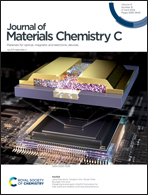Advancements in memory technologies for artificial synapses
Abstract
Neural networks (NNs) have made significant progress in recent years and have been applied in a broad range of applications, including speech recognition, image classification, automatic driving, and natural language processing. The hardware implementation of NNs presents challenges, and research communities have explored various analog and digital neuronal and synaptic devices for resource-efficient implementation. However, these hardware NNs face several challenges, such as overheads imposed by peripheral circuitry, speed–area tradeoffs, non-idealities associated with memory devices, low on–off resistance ratio, sneak path issues, low weight precision, and power-inefficient converters. This article reviews different synaptic devices and discusses the challenges associated with implementing these devices in hardware, along with corresponding solutions, and prospecting future research directions. Several categories of emerging synaptic devices such as resistive random-access memory (RRAM), phase change memory (PCM), analog-to-digital hybrid volatile memory-based, ferroelectric field effect transistor (FeFET)-based, spintronic-based spin transfer, spin–orbit, magnetic domain wall (DW) and skyrmion synaptic devices have been explored, and a comparison between them is presented. This study provides insights for researchers engaged in the field of hardware neural networks.

- This article is part of the themed collection: Journal of Materials Chemistry C Recent Review Articles


 Please wait while we load your content...
Please wait while we load your content...